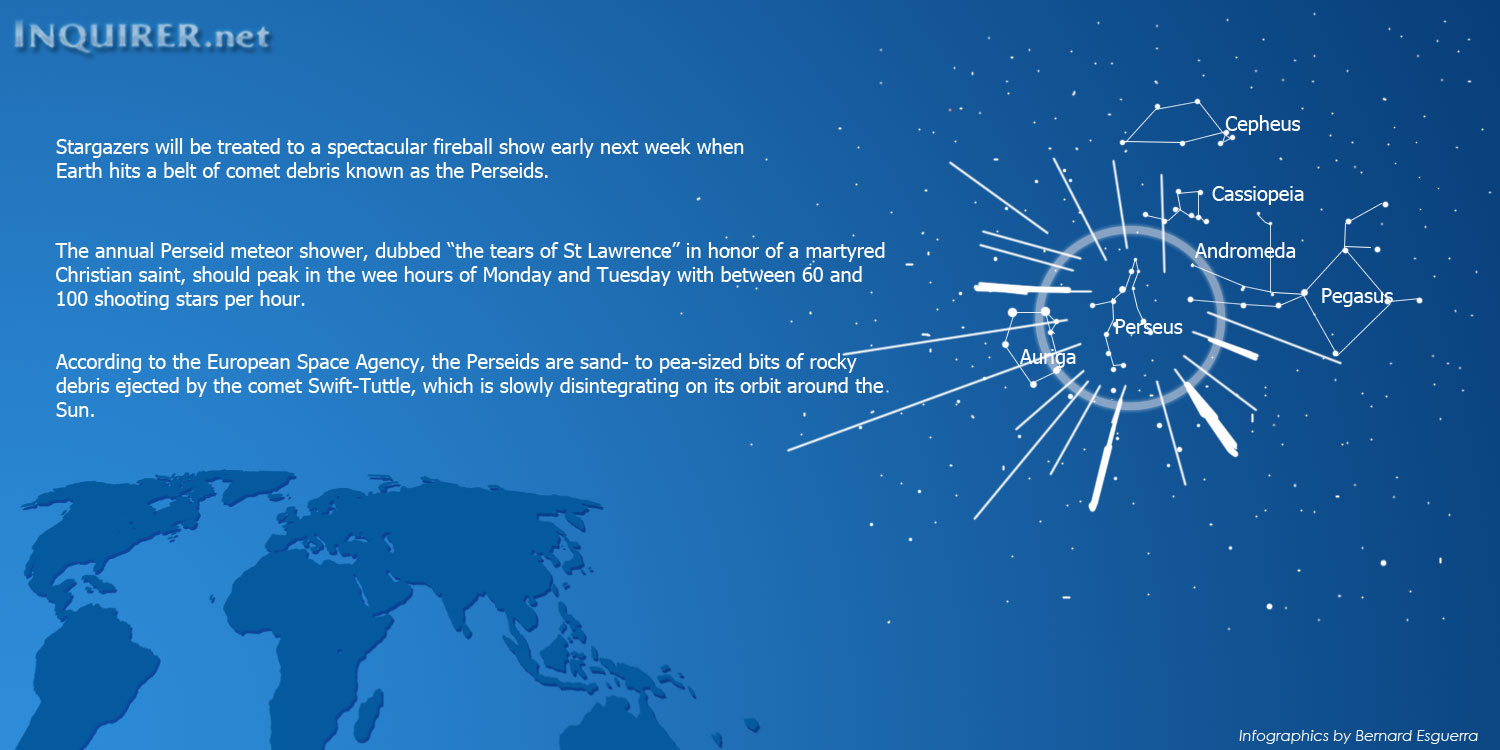Perseid meteoroids to produce great balls of fire

The annual Perseid meteor shower, dubbed “the tears of St Lawrence” in honor of a martyred Christian saint, should peak in the wee hours of Monday and Tuesday with between 60 and 100 shooting stars per hour.
They will be visible over most of the world, but most clearly in the northern hemisphere, aided by an early-setting crescent Moon leaving a dark canvas for the celestial fireworks.
Cloudless skies permitting, the best viewing time will be the hours just before dawn on Monday and Tuesday, the head of US space agency NASA’s meteoroid office, Bill Cooke, told AFP.
“Go outside, allow about 30-45 minutes for your eyes to dark adapt. Lie flat on your back (sleeping bag or lawn chair) and look straight up: take in as much of the sky as you can,” he said by email.
“My experience is that most people who are disappointed viewing meteors go out for only a few minutes expecting to see something: this will work only for major outbursts not normal meteor showers. So be prepared to spend at least a couple of hours outside; don’t expect to see many before midnight.”
Article continues after this advertisementAccording to the European Space Agency, the Perseids are sand- to pea-sized bits of rocky debris ejected by the comet Swift-Tuttle, which is slowly disintegrating on its orbit around the Sun.
Article continues after this advertisementOver the centuries, its remains have spread along the comet’s orbit to form a stream of particles hundreds of millions of kilometers long.
Earth’s path around the Sun crosses the stream every mid-August.
The particles, called meteoroids, hit our planet’s atmosphere at about 60 kilometers per second (37 miles per second) – each igniting in a white-hot streak of superheated air.
According to Cooke, the Perseid showers produce more fireballs than any other.
They are named after the star constellation of Perseus from which they appear to spread out, and have been seen for about 2,000 years – the earliest observations recorded in China.
St. Lawrence was an early Christian deacon tortured to death by the Romans in AD 258. His saint’s day of August 10 coincides with the Perseids buildup.
According to legend, Laurentius was martyred on an iron grill over a fire, during which ordeal he is said to have quipped to his persecutors, “Turn me over. I’m done on this side!”
He is the patron saint of cooks.